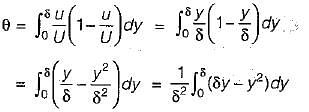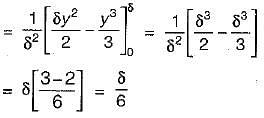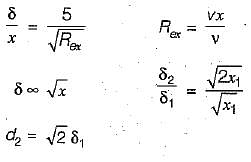Test: Boundary Layer Theory - 2 - Mechanical Engineering MCQ
10 Questions MCQ Test Fluid Mechanics for Mechanical Engineering - Test: Boundary Layer Theory - 2
The maximum thickness of boundary layer in a pipe of radius r is
The velocity profile for turbulent boundary layer is:
| 1 Crore+ students have signed up on EduRev. Have you? Download the App |
The drag force experienced by an object in a fluid stream is
The correct relationship among displacement thickness ‘d’ momentum thickness ‘m’ and energy thickness ‘e’ is
What is the momentum thickness for the boundary layer with velocity distribution u/U = y/δ ?
If x is the distance from leading edge, then the boundary layer thickness in laminar flow varies as
If δ1 and δ2 denote the boundary layer thicknesses at a point distance x from the leading edge on a fiat plate when the Reynolds numbers are 100 and 256 respectively, then the ratio of δ1 to δ2 will be
If δ1 is the thickness of laminar boundary layer at a distance x1 from the leading edge of the flat plate, the thickness δ2 at x2 = 2x1 is equal to
The displacement thickness δ* of a boundary layer is defined as δ* =
|
56 videos|104 docs|75 tests
|
|
56 videos|104 docs|75 tests
|




























